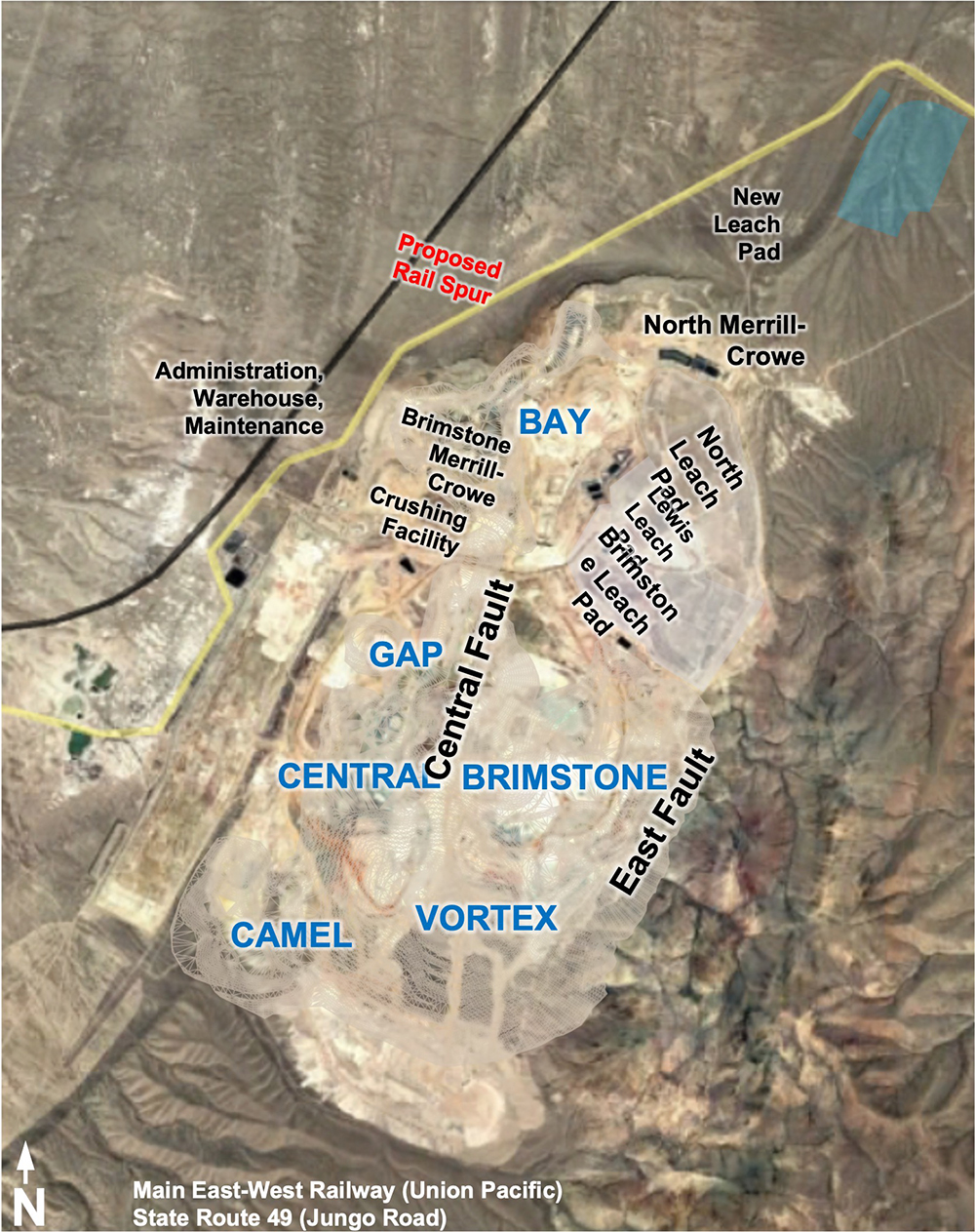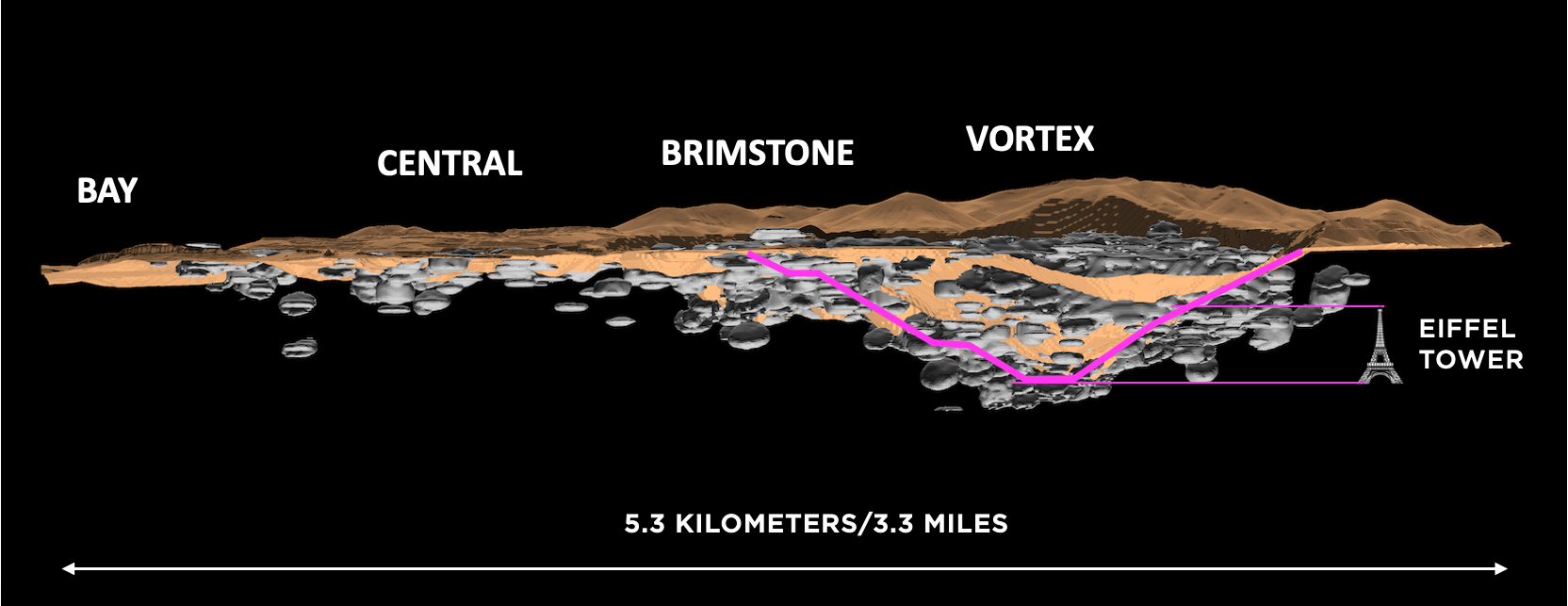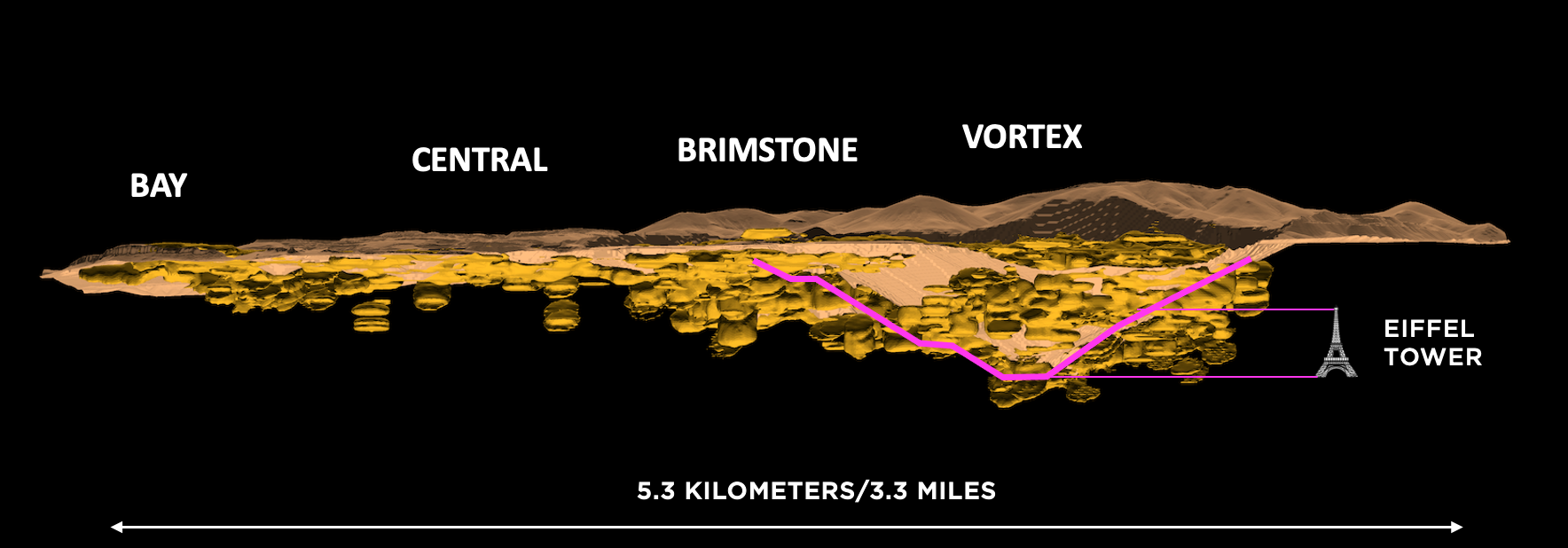The Hycroft Mine is located on the western flank of the Kamma Mountains in the Basin and Range physiographic province of northwestern Nevada. The Kamma Mountains was formed during the Miocene to Quaternary Epoch from the uplift of Jurassic basement rock and emplacement of Tertiary volcanic and sedimentary rocks. The stratigraphy along the western flank of the range is down dropped to the west, along a series of north to northeast striking normal faults. These faults served as conduits for hydrothermal fluids that deposited the Hycroft mineralization.
Hycroft is a large, epithermal, low sulfidation, hot springs deposit. Gold and silver mineralization occurs as both disseminated and vein-controlled.
The deposit is generally represented in five major zones based on geology, mineralization, and alteration. These zones include Brimstone, Vortex, Central, Bay, Gap, and Camel. Breaks between the zones are major faults.
Mineralization at Hycroft has been deposited through multiple phases. An early silica sulfide flooding event deposited relatively low-grade gold and silver mineralization, generally along bedding. This mineralization is crosscut by later, steeply dipping quartz alunite veins. Late-stage silver bearing veins are found in the Vortex zone and at depth in the Central area. Late-to-present supergene oxidation along faults has liberated precious metals from sulfides and further enriched gold and silver mineralization, along water table levels.


